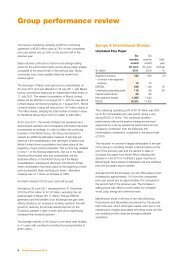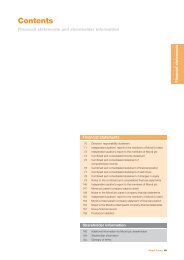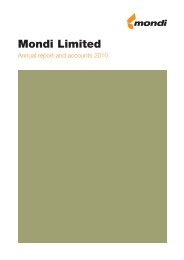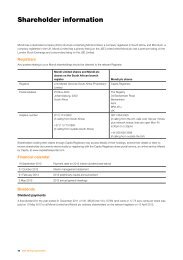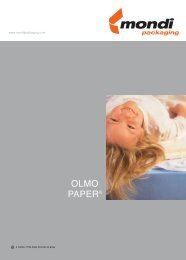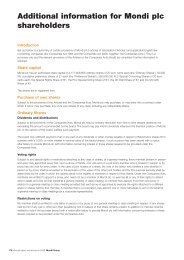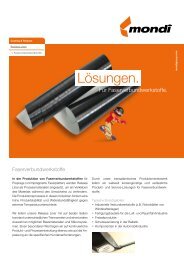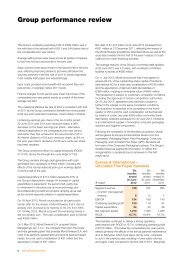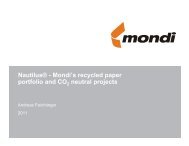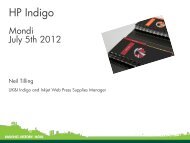for sustained success - Mondi
for sustained success - Mondi
for sustained success - Mondi
Create successful ePaper yourself
Turn your PDF publications into a flip-book with our unique Google optimized e-Paper software.
Waste management/recycling<br />
Basic principle of NEUSIEDLER waste management<br />
The paper and pulp industry produces wastes mainly in the <strong>for</strong>m of paper<br />
broke, packaging materials, bark, screening rejects, clarification sludge from<br />
water treatment and ash and slag from furnaces. A great part of these materials<br />
can be either recycled within the production process or used elsewhere.<br />
The waste management of the NEUSIEDLER Group endeavours to adhere as<br />
far as possible to the basic principle of waste management, i.e. to a list of priorities<br />
ranging from waste avoidance to final dumping as a last resort. This principle<br />
paves the way <strong>for</strong> the optimum reuse or disposal of all waste, in strict<br />
compliance with European legal requirements.<br />
Maximum reuse is an overarching aim at NEUSIEDLER. Unavoidable waste is<br />
generally recycled to the highest possible degree or discharged <strong>for</strong> external material<br />
reuse. If none of these alternatives is possible, the waste is either converted<br />
into thermal energy or, after environmentally appropriate treatment, deposited<br />
as landfill.<br />
Priority order Examples<br />
Avoidance h Avoidance of broke and seconds through strict quality management<br />
h Avoidance of packaging waste, etc. through shipment in large tanks<br />
and use of refillable containers<br />
Reuse h Reuse of wrongly declared but undamaged goods in specialities<br />
finishing<br />
Internal use as material h Efficient chemical recovery in pulp production<br />
h Recycling of paper broke<br />
External use as material h Strict separation of waste as basis <strong>for</strong> external reuse (wood, metals,<br />
glass, plastics, waste paper, hazardous waste, etc.)<br />
Use as fuel h Burning of bark, waste liquor and sludge if feasible<br />
Treatment h Treatment of hazardous waste by external companies<br />
Disposal h Deposition of combustion residues (ashes and slag) and other not<br />
recyclable residues<br />
On account of the stringent legislation that has prevailed <strong>for</strong> many years,<br />
waste management is most advanced at the Austrian plants, which serve as a<br />
model <strong>for</strong> the entire Group. At the Austrian locations, more than 30 different<br />
types of waste are collected and transferred to appropriate material and/or energy<br />
utilisation. As a result, only approximately 2% of the entire waste ends up in<br />
landfill.<br />
27 NEUSIEDLER Sustainability Report 2003 | Environment



